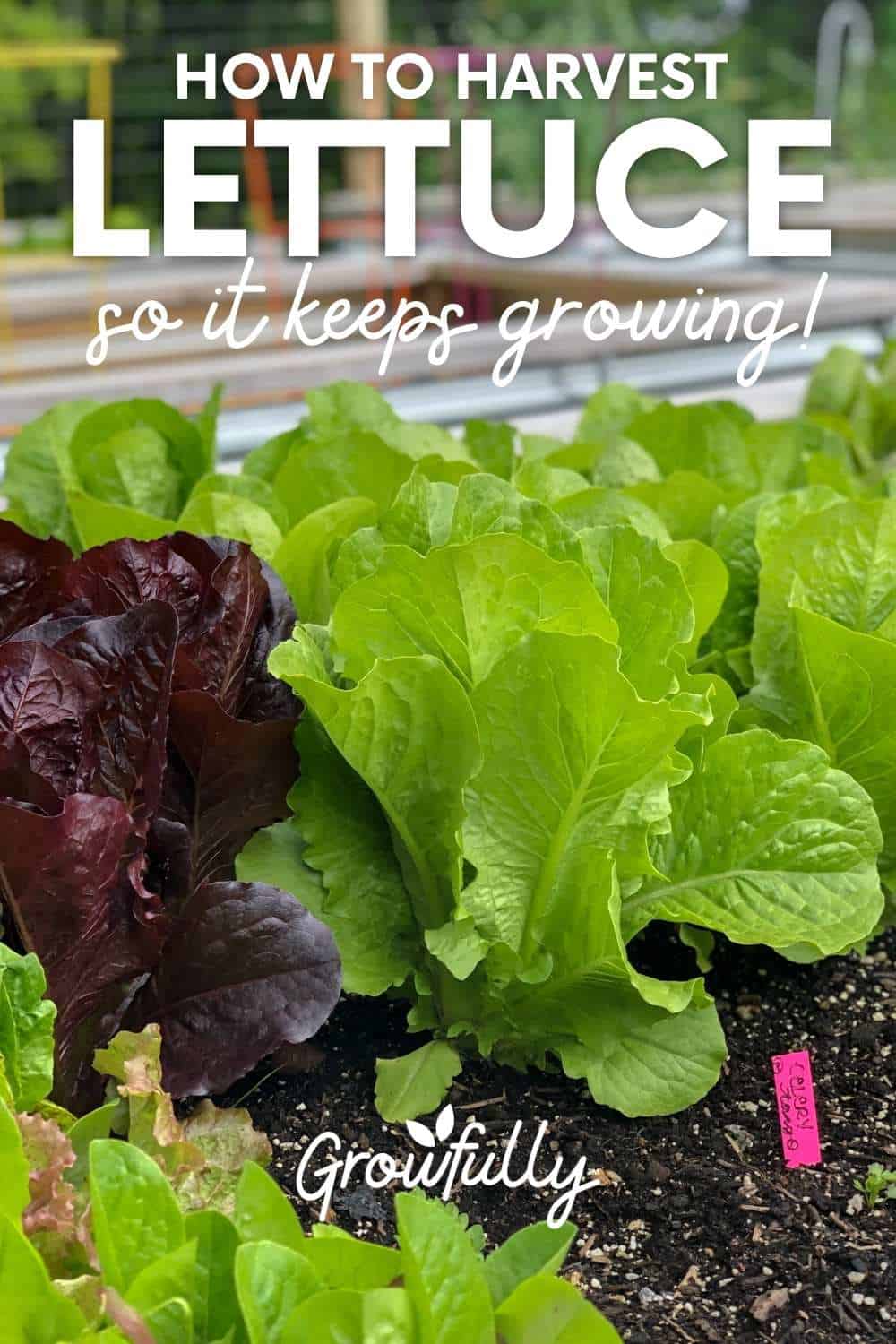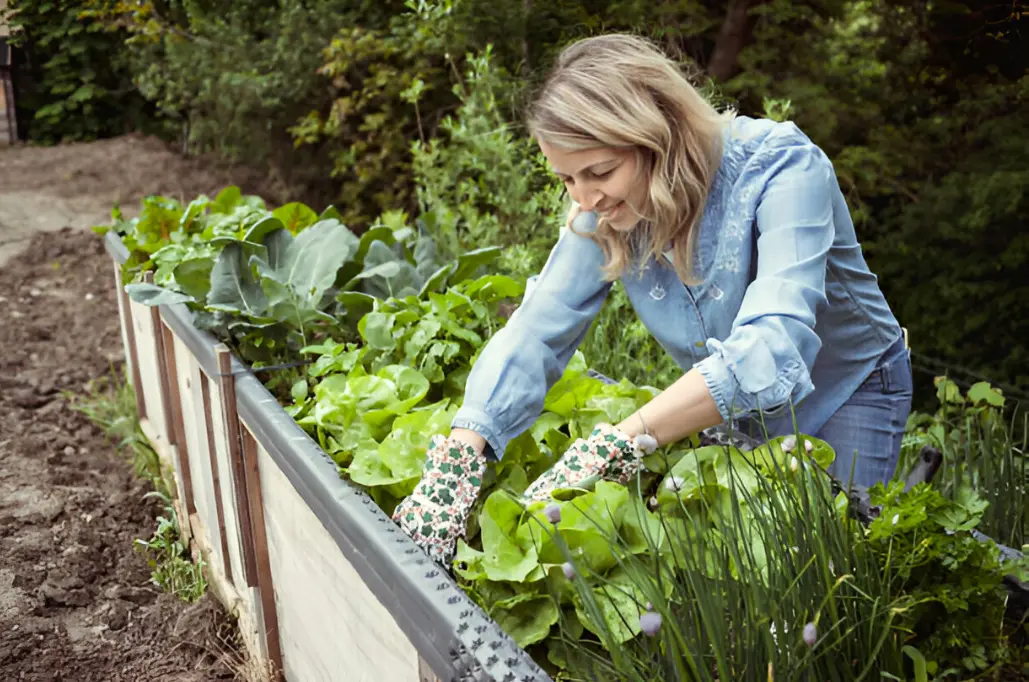Imagine stepping into your garden and being greeted by rows of vibrant, leafy greens. Your lettuce is ready to be harvested, promising fresh, crisp salads that burst with flavor.
But how do you ensure you pick your lettuce at just the right time for the best taste and texture? Harvesting your lettuce correctly not only satisfies your immediate culinary desires but also keeps your garden thriving for future growth.
By following a few simple steps, you’ll learn how to maximize your harvest and keep your garden healthy. Stick around, and you’ll discover the secrets to enjoying garden-fresh lettuce that tastes like no other.
Choosing The Right Time
Knowing the right time to harvest lettuce is crucial. Timing affects the taste and texture of your lettuce. Picking lettuce at the right moment ensures a fresh and delicious yield. Several factors determine the best harvest time.
Ideal Growth Stage
Observe the size of the lettuce leaves. Mature leaves are ready when they reach a full size. Tender and crisp leaves are ideal for harvesting. Avoid letting the lettuce bolt, as it turns bitter. Check the core; it should be firm, not hard.
Seasonal Considerations
Season plays a vital role in lettuce harvesting. Lettuce thrives in cooler temperatures. Spring and fall are the best seasons for harvesting. Hot weather can cause lettuce to bolt. Monitor the temperature to prevent bitter leaves.
Understanding these stages helps you pick lettuce at its peak. Fresh lettuce adds flavor to salads and dishes. Enjoy your garden’s bounty by timing your harvest wisely.
Tools And Equipment
Growing lettuce in your garden is rewarding. Harvesting it requires the right tools. Proper equipment ensures a clean and efficient process. This section covers essential tools and safety gear for your lettuce harvest.
Essential Harvesting Tools
A sharp pair of scissors is crucial for cutting lettuce. They make precise cuts, keeping plants healthy. Garden shears work well for larger harvests. They handle thick stems with ease. A basket or colander collects the harvested lettuce. This keeps it clean and ready for washing.
Safety Gear
Gardening gloves protect your hands from dirt and cuts. They provide a good grip on tools. Wear a sun hat if harvesting during sunny days. It shields your face from direct sunlight. Comfortable shoes help during long hours in the garden. They support your feet and prevent slips.
Methods Of Harvesting
Are you ready to enjoy fresh, home-grown lettuce from your garden? Knowing how to harvest it properly can make all the difference in taste and yield. Whether you prefer picking individual leaves or taking the entire head, each method offers unique benefits. Let’s dive into these techniques and find the best fit for your gardening style.
Cutting Individual Leaves
One popular method is cutting individual leaves. This approach allows for a continuous harvest throughout the growing season. You can enjoy fresh lettuce in your salads without uprooting the plant.
Use sharp scissors or garden shears to snip the outer leaves. Leave the center intact so it can continue growing. Make sure not to cut too close to the stem, as this can damage the plant.
Imagine stepping outside and picking fresh lettuce for tonight’s dinner. This method lets you harvest exactly what you need, reducing waste. Plus, your garden stays lush and productive for weeks.
Harvesting The Entire Head
Another option is harvesting the entire head of lettuce. This technique is ideal for those who prefer a one-time harvest. It’s straightforward and quick, perfect for busy gardeners.
To harvest the whole head, gently pull or cut at the base of the stem. Make sure the lettuce is mature enough, usually indicated by a firm and full head.
Consider the satisfaction of gathering an entire head of lettuce. You get a complete and fresh ingredient for your recipes, straight from your garden. This method also frees up space for new plants or crops.
Which method suits your gardening style? Whether you opt for individual leaves or the entire head, each has its charm. Embrace the joy of gardening and savor the delicious results.
Preventing Damage
Gently cut lettuce leaves near the base to prevent damage. Use a sharp knife or scissors. Harvest in the morning for crispness.
Harvesting lettuce requires care to prevent damage. Damaged leaves can spoil quickly. They also attract pests. Proper handling and awareness of pests are essential. Let’s explore how to protect your lettuce.
Proper Handling Techniques
Handle lettuce gently to avoid bruising. Use clean, sharp scissors or a knife. Cut leaves at the base for a clean finish. Hold the leaves gently as you cut. Avoid pulling or tearing. This can damage the plant and reduce future growth. After cutting, place leaves in a basket or container. Do not stack them too high. This prevents crushing. Gently rinse and pat dry before storing.
Avoiding Pests And Diseases
Inspect your lettuce regularly for pests. Common pests include aphids and slugs. Remove them by hand or use gentle sprays. Encourage natural predators like ladybugs. They help control aphid populations. Maintain good garden hygiene. Remove dead leaves and debris. This reduces pest habitats and disease spread. Rotate crops each season to prevent soil-borne diseases. Healthy plants resist pests and diseases better. Keep your garden thriving with these simple steps. `
Post-harvest Care
After you’ve successfully harvested your lettuce, post-harvest care becomes essential to maintain its freshness and flavor. This part of the process is often overlooked, but handling your lettuce properly can make all the difference. Imagine enjoying a crisp salad straight from your garden, knowing you’ve done everything to preserve its natural taste and texture.
Cleaning The Lettuce
Begin by gently rinsing your lettuce under cold water. This helps to remove any dirt or insects hiding in the leaves. As you do this, be careful not to bruise the leaves; lettuce is delicate and can easily get damaged.
After rinsing, pat the leaves dry with a clean towel or use a salad spinner. This step is crucial as excess moisture can lead to faster spoilage. I once skipped this drying part, and my lettuce wilted in just a day!
Check each leaf for any spots or imperfections. Trim them away to ensure only the freshest parts are stored. Have you ever noticed how store-bought lettuce can sometimes have brown edges? Avoid this by being diligent in your cleaning.
Storage Tips
Once cleaned, proper storage is key. Place your dry lettuce in a breathable container like a paper bag or wrap it in a clean kitchen towel. This allows air circulation, preventing the leaves from becoming soggy.
Refrigerate your lettuce promptly to keep it crisp. The vegetable drawer is usually the best spot, as it maintains the right humidity levels. Have you ever tried storing lettuce in the fridge door? It might seem convenient, but the temperature fluctuation can shorten its shelf life.
Avoid storing lettuce near ethylene-producing fruits like apples or bananas. Ethylene gas can cause lettuce to spoil faster. Have you ever opened your fridge to find your once-fresh lettuce looking limp and sad? This might be the culprit.
Consider marking the date on your storage container. This can help you keep track of how long your lettuce has been stored and ensure you consume it while it’s still fresh. Isn’t it satisfying to enjoy produce at its best?

Credit: www.gardenary.com
Extending The Harvest
Lettuce is a staple in many gardens. Its crisp leaves add freshness to dishes. Harvesting lettuce can feel rewarding. Yet, extending the harvest makes it even more fulfilling. Discover ways to keep enjoying your lettuce longer. This section explores techniques to extend your lettuce harvest.
Succession Planting
Succession planting ensures a steady supply of lettuce. Plant seeds every two weeks. This creates a cycle of growth. As one batch matures, another begins to sprout. Choose different varieties for diversity. Some grow faster, others take longer. This method helps avoid gaps in your harvest.
Regrowing Tips
Regrowing lettuce is simple and efficient. Cut the leaves, leaving a small stump. Place the stump in shallow water. Watch as it begins to regrow. Change the water every few days. In a week, new leaves start to appear. This method extends the life of your lettuce. It’s a great way to make the most of your harvest.
Common Mistakes
Harvesting lettuce too late can lead to bitter leaves. Cutting too close to the root might damage future growth. Picking during the hottest part of the day can wilt the leaves quickly.
Harvesting lettuce from your garden might seem straightforward, but even seasoned gardeners can make common mistakes that impact their crop. Understanding these pitfalls can help you maximize your harvest and keep your lettuce plants healthy. Let’s explore some of the typical errors gardeners make so you can avoid them and enjoy a bountiful harvest.
Over-harvesting
Many gardeners fall into the trap of over-harvesting, thinking they need to pick as much lettuce as possible. This can stress your plants and reduce their growth potential. Consider this: every leaf taken is energy lost for the plant. If you pick too much, it might not have enough leaves left to continue photosynthesis efficiently. Try harvesting only the outer leaves, leaving the inner ones to grow. This helps your plant stay productive longer.
Ignoring Weather Conditions
Weather conditions play a crucial role in the health and yield of your lettuce. Many gardeners overlook the impact of extreme weather. Imagine harvesting lettuce during a heatwave. The leaves might wilt quickly, impacting their taste and texture. Check the weather forecast before harvesting. Aim to pick lettuce in the cool morning or evening hours. This simple adjustment can significantly improve the quality of your lettuce. Are you monitoring the weather changes? This small effort can make a big difference in your gardening success.

Credit: growfully.com
Benefits Of Homegrown Lettuce
Growing lettuce in your own garden is an exciting and rewarding experience. Not only do you get to enjoy the freshness and flavor of homegrown produce, but there are also several benefits that make it worthwhile. From nutritional perks to cost savings, homegrown lettuce has a lot to offer.
Nutritional Advantages
Homegrown lettuce is packed with nutrients because it doesn’t have to travel long distances before reaching your plate. You can enjoy it right after harvesting, ensuring maximum freshness and nutrient retention. Fresh lettuce is rich in vitamins like A and K, which support your eye health and bone strength.
Commercially grown lettuce often loses some of its nutritional value due to prolonged storage and transport. By growing your own, you can control the quality and pick the leaves at their peak. This makes a significant difference in the taste and health benefits of the lettuce you consume.
Have you ever tasted lettuce straight from your garden? The crispness and flavor are unmatched, and it encourages you to eat more greens, contributing to a healthier diet.
Cost Efficiency
Buying fresh lettuce from the store can be pricey, especially if you’re aiming for organic options. Growing your own lettuce is a cost-effective solution that can help you save money. Once you’ve planted the seeds, the recurring costs are minimal, mainly involving water and occasional fertilizers.
Consider the satisfaction of picking a fresh head of lettuce without spending a dime. Each harvest reduces your grocery bill and adds more green to your wallet. Plus, you can grow different varieties, expanding your salad options without additional cost.
Is it time to rethink the way you invest in your greens? A small patch in your garden can yield enough lettuce to keep your salads interesting and budget-friendly. Gardening is a hobby that pays off in more ways than one.
By growing your own lettuce, you not only contribute to your health and savings but also enjoy the simple pleasure of gardening. Why not give it a try and experience these benefits firsthand?

Credit: www.attainable-sustainable.net
Frequently Asked Questions
How To Harvest Lettuce So That It Keeps Growing?
Harvest lettuce by cutting outer leaves 1 inch above the base. Leave the inner leaves intact. Use sharp scissors for clean cuts. Avoid damaging the plant base to encourage regrowth. Water and fertilize regularly to support continuous growth. Repeat harvesting every few weeks for ongoing yield.
How Do I Know When My Lettuce Is Ready To Be Pulled?
Check lettuce maturity by size and color. Harvest when leaves are vibrant green and firm. Butterhead varieties form loose heads; Romaine should be 6-8 inches tall. Pick before leaves become bitter. Regularly inspect for optimal freshness and taste.
Will Leaf Lettuce Grow Back After Cutting?
Yes, leaf lettuce can regrow after cutting. Harvest outer leaves and leave the center intact. This encourages regrowth. Ensure proper watering and sunlight to support the process. You can enjoy multiple harvests throughout the growing season by repeating this method.
How To Cut Lettuce And Keep It Growing?
Cut lettuce leaves about 1 inch above the base using clean scissors. Ensure the root remains intact. Water regularly and provide adequate sunlight. New leaves will sprout in a few weeks. Harvest when they reach desired size for continuous growth.
Conclusion
Harvesting lettuce can be simple and rewarding. Follow these steps, and enjoy fresh greens. Check your lettuce for readiness before picking. Use clean scissors or a knife. Cut near the base for best results. Water your plants after harvesting to encourage new growth.
Store your lettuce in the fridge to keep it fresh. Share your harvest with family and friends. Gardening brings joy and healthy food to your table. Keep practicing and watch your skills grow. Your garden can become a source of pride and delicious meals.
Happy gardening and healthy eating!
Featured image by Epiximage/Istock







